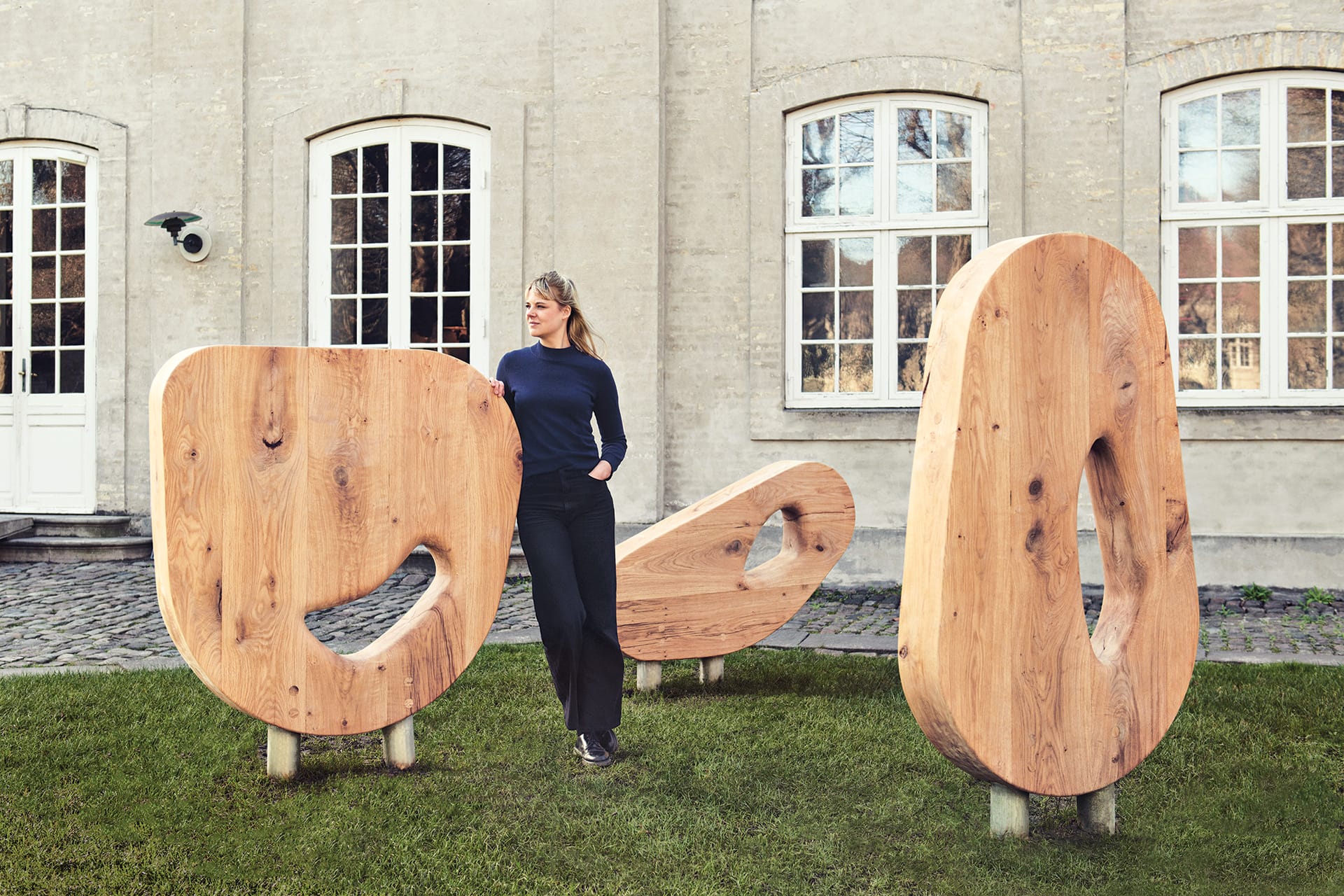How Copenhagen Designer Anne Brandhøj Highlights the Natural Beauty of Wood
A wall-size installation of sculptural shelves made waves at the Design Miami/ booth of Hostler Burrows

Copenhagen designer Anne Brandhøj felled her first tree several years ago, when she was still a student at the Royal Danish Academy. Partly, she wanted thicker cuts than were available at the lumber store. But she was also seeking to better understand the wood she uses for her furniture and sculptures, including how it is harvested and processed. With the guidance of some loggers, she cut down a Douglas fir and brought home pieces of the trunk to dry.
“That was a challenge because it’s hard to control,” recounts Brandhøj, who now often sources wood from people removing trees in their gardens. “You don’t know how the wood is going to crack, shrink, and twist, and I decided to use that in my work instead of trying to force the wood to be something specific.”
Brandhøj’s minimalist furniture and biomorphic sculptures feature conspicuous splits, knots, and other irregularities. “I want to make people see that it is living material,” says the designer, who also likes to mix different woods, highlighting variations in texture, graining, and coloration. She plays with soft, rounded contours and crisp edges, combining raw and machined elements, all of which gives her work a tactile quality. “You need to touch it,” she says. “There’s a total other experience if you use your hands.”

Interactivity was central to one of Brandhøj’s most important projects to date: a 2020 commission for the garden of Copenhagen’s Designmuseum Danmark, where she created a trio of freestanding oak sculptures in rounded, organic shapes that are meant to be touched and played on as they weather and age. Each has a curvy cutout, a device Brandhøj uses often, the voids not only providing windows into the wood but also giving the pieces depth, dimensionality, and lightness.
“I don’t know the final form before I put a trunk on the lathe, because I don’t know what’s inside,” she says. “I just remove material and slowly work my way into it. I make a lot of sawdust.”

In December, Brandhøj’s work will be a centerpiece at the Design Miami/ booth of the New York and Los Angeles gallery Hostler Burrows. She is creating a wall-size installation of sculptural shelves using offcuts of various woods. Like all of her work, the installation nods to issues around waste and sustainability while elevating the discarded and flawed.
“I die a little bit inside every time I see furniture with a smooth surface where you cannot see any structure, any knot, anything at all,” says Brandhøj. “It’s a shame when there is so much beauty in the wood to show.”
A version of this article first appeared in print in our 2023 Winter Issue under the headline “Into the Woods.” Subscribe to the magazine.